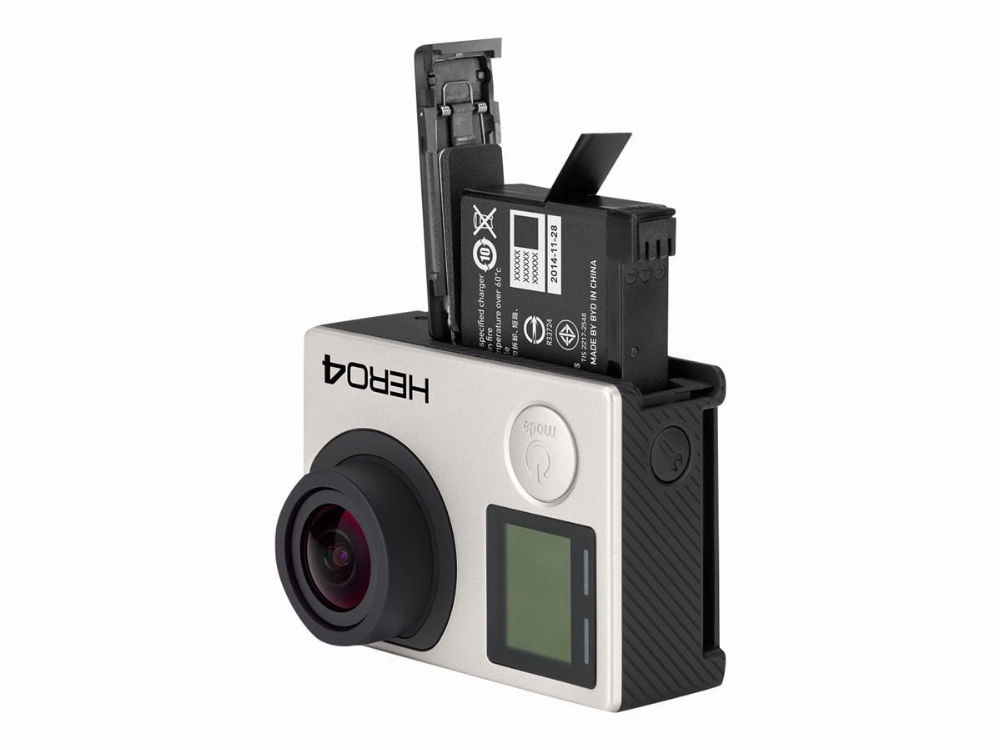Part 1: What is a CR Battery?
A CR battery is a type of button cell battery commonly used in small electronic devices such as watches, key fobs, calculators, and medical devices. The “CR” in its name refers to the lithium chemistry used in the battery—”C” stands for lithium, while “R” denotes its round shape. These batteries are compact, making them ideal for tight spaces, while providing reliable and long-lasting power.
CR batteries are characterized by their use of lithium-based chemistry. This allows them to deliver a high voltage (typically 3.0V) and have a longer shelf life compared to older battery types. CR batteries are non-rechargeable and come in a variety of sizes, each designed for specific applications.
Most CR batteries use lithium manganese dioxide (LiMnO2) chemistry, which offers significant advantages compared to other types. It is stable, long-lasting, and can operate over a wide temperature range, making it suitable for a variety of devices, including hearing aids, fitness trackers, remote controls, and key fobs.
CR Battery Naming Convention
Understanding the naming convention of CR batteries is crucial for selecting the right battery for your device. The most common naming format for CR batteries follows this pattern: CR####. The “C” and “R” stand for lithium chemistry and round shape, while the numbers provide key details about the battery’s size and capacity. Here’s a detailed breakdown:
- The first two digits (e.g., 20 in CR2025): These numbers indicate the diameter of the battery in millimeters (mm).
- The last two digits (e.g., 25 in CR2025): These numbers indicate the thickness of the battery in tenths of millimeters (mm).
For example, a CR2025 battery has:
- A diameter of 20 mm.
- A thickness of 2.5 mm.
Other common CR battery sizes follow the same naming pattern:
- CR1632: 16 mm in diameter and 3.2 mm thick.
- CR2032: 20 mm in diameter and 3.2 mm thick. The CR2032 is one of the most widely used batteries and is commonly found in devices such as remote controls, computer motherboards, and fitness trackers.
Part 2: How CR Battery Size Affects Performance
The size of a CR battery plays a significant role in its performance. Larger batteries tend to have higher capacities and longer lifespan, while smaller batteries are more compact and designed for devices that require less power. The battery size determines how long a device can operate before needing a replacement.
For instance, the CR2032 battery is often used in devices that require more power, such as remote controls or computer motherboards. With its larger surface area, it can store more energy, which extends its lifespan. On the other hand, the CR1632 battery, while offering less energy, is ideal for smaller devices like calculators and key fobs, where space is limited.
It’s important to note that capacity (measured in milliampere-hours (mAh)) is directly related to the battery size. Larger CR batteries can deliver more current over a longer period, making them suitable for devices that require extended use. However, larger batteries may not fit into smaller devices, which is where smaller batteries like the CR1220 or CR1216 are useful.
Part 3: CR Battery Size Chart
Here is a helpful reference chart outlining various CR battery sizes, their capacities, and typical applications:
| Battery Size | Diameter (mm) | Thickness (mm) | Capacity (mAh) | Common Applications |
|---|---|---|---|---|
| CR1025 | 10.0 mm | 2.5 mm | 35-45 mAh | Key fobs, small devices |
| CR1216 | 12.0 mm | 1.6 mm | 30-50 mAh | Watches, medical devices |
| CR1632 | 16.0 mm | 3.2 mm | 130-160 mAh | Calculators, toys |
| CR2032 | 20.0 mm | 3.2 mm | 200-220 mAh | Computer motherboards, hearing aids |
| CR2450 | 24.5 mm | 5.0 mm | 500 mAh | Fitness trackers, remote controls |
| CR2025 | 20.0 mm | 2.5 mm | 150-170 mAh | Car remotes, LED lights |
As the chart illustrates, each CR battery size has its own specific characteristics and applications. This simplifies the process of selecting the appropriate battery for your device. To learn more about the benefits of solar battery storage, visit: 5 Benefits of Solar Battery Storage.
CR2032 vs. CR2025 Batteries: Which is Better?
Part 1: What are CR Batteries?
CR batteries are small, round, coin-shaped batteries commonly used in various devices such as watches, key fobs, calculators, and more. The “CR” term refers to the battery’s chemical composition, specifically lithium-based technology, which provides reliable and long-lasting performance. These batteries typically have a voltage of 3.0V, ensuring a stable power output during use. CR batteries are popular due to their compact size, ease of use, and ability to power a wide range of devices.
Part 2: CR2032 vs. CR2025 – Size Comparison
CR2032 and CR2025 are both common lithium coin cell batteries, but their size difference can affect their performance in some devices.
- CR2032 Battery:
- Diameter: 20 mm
- Height: 3.2 mm
- Capacity: 220mAh
- CR2025 Battery:
- Diameter: 20 mm
- Height: 2.5 mm
- Capacity: 160mAh
The main differences are in thickness and capacity. The CR2032 is thicker and has a higher capacity, which means it can provide power for a longer time before needing replacement. However, it may not fit in devices specifically designed for the thinner CR2025, so choosing the correct size is crucial.
Part 3: CR Battery Specifications – Diameter, Height, and Capacity
When selecting a CR battery, it is essential to consider key specifications such as diameter, height, and capacity, as they directly influence how the battery performs in your device. The diameter determines the fit, the height affects the battery’s capacity and lifespan, and the capacity (mAh) indicates how long the battery will last before needing replacement.
Choosing the correct battery size based on these factors ensures that your devices operate efficiently and smoothly.
Part 4: CR Battery Voltage
CR batteries typically operate at a voltage of 3.0 volts, which is a uniform voltage for most sizes. This makes them interchangeable in various devices, provided the device is designed to accommodate the different dimensions. The voltage is relatively high for such a small battery, which allows CR batteries to deliver long-lasting power.
While the voltage remains consistent across different CR battery sizes, what varies is the battery’s capacity. For example, the CR2032 has a higher mAh capacity compared to smaller batteries like the CR1632, resulting in a longer battery life.
Part 5: CR Battery Types
CR batteries come in several types, primarily determined by their chemical composition, which affects their performance. The most common type uses Lithium Manganese Dioxide (LiMnO2), which is known for its stability, light weight, and reliable long-term performance. Another option is Lithium Iron Disulfide (LiFeS2), which offers enhanced safety features and is often used in higher-power devices like cameras and electronics.
Lithium-based materials are stable in extreme temperatures, which makes CR batteries widely used in outdoor equipment, GPS systems, and medical devices.
Part 6: Are CR Batteries Rechargeable?
CR batteries are not rechargeable. These batteries are designed for single-use and need to be replaced once depleted. Unlike rechargeable batteries like Li-ion or NiMH, CR batteries cannot be safely recharged. Attempting to recharge them can damage the battery or device and may even lead to leakage or overheating, which can be hazardous.
If you need rechargeable batteries, consider alternatives like Li-ion or NiMH batteries.
Part 7: Choosing the Right CR Battery Size
To choose the right CR battery size, you need to understand the specific requirements of your device. It is best to consult your device’s manual or check the old battery to determine the correct size. Using the wrong size can lead to poor performance or even damage to the device.
Here’s a general guideline for some common CR battery sizes:
- Watches, Calculators, Small Devices, etc.: Use CR1216, CR1632, or CR2025.
- Larger electronics such as remote controls and fitness trackers: CR2032 or CR2450 are often the best choice.
- Specialized equipment such as medical devices and cameras: Frequently use CR2032, CR2025, or CR2450.
If you’re unsure, always refer to the manufacturer’s recommendations. A quick online search can also help you determine which CR battery size is suitable for your device.
Part 8: FAQs
Can I use a CR2032 instead of a CR2025?
Yes, you can use a CR2032 instead of a CR2025 provided that the battery compartment can accommodate the thicker CR2032.
How long do CR batteries last?
CR batteries typically have a shelf life of 5 to 10 years, depending on usage.
Are CR batteries environmentally friendly?
CR batteries are relatively environmentally friendly and should be recycled properly to minimize environmental impact.
Are there issues with using the wrong CR battery model?
Using an incompatible CR battery model can lead to performance problems. It may not fit your device properly or even provide power.
Which CR battery is best for remote controls?
Generally, CR2032 or CR2450 batteries are the best choices for remote controls.
Related Topics:
- How to Safely Clean Battery Corrosion: A Step-by-Step Guide
This guide explains the risks, safety precautions, and proper methods to take when safely cleaning battery corrosion. - Portable Battery Charger vs. Power Bank: What’s the Difference?
A portable battery charger is any device used to charge a battery, while a power bank stores energy to charge devices without a direct power source. - The Ultimate Guide to Using a Lithium-Ion Jump Starter
A lithium-ion jump starter is an essential tool for car emergencies. This guide covers how to use it, safety precautions, maintenance tips, and why it’s a valuable investment. - What is a Portable Battery Charger?
Portable battery chargers ensure your devices stay powered on the go. This guide will cover its definition, how it works, and the materials used. - How to Choose the Right Battery Pack for Your Needs: Capacity, Performance, and More
Selecting the right battery pack is crucial for performance and reliability. This guide will help you understand key factors like capacity, security, performance, and more to make the best choice for your needs.








